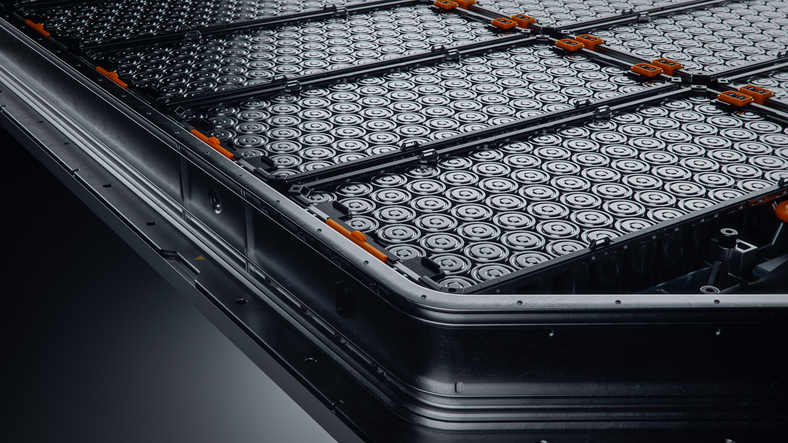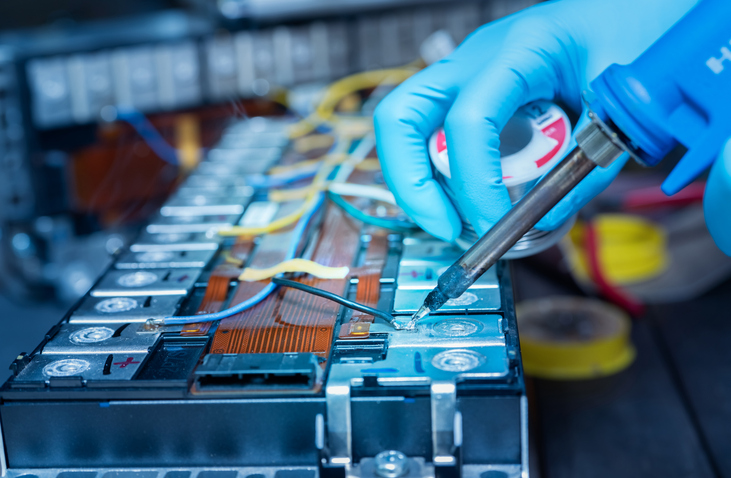Batteries are used everywhere from our phones to our cars, and with such widespread use, these batteries need to be as safe as possible. Unfortunately, some batteries — particularly those used within the EV or hybrid vehicle markets — can be susceptible to thermal runaway. Thermal runaway refers to a chain reaction from individual batteries or battery packs that can occur due to high temperatures. Once begun, thermal runaway is extremely difficult to contain eventually leading to more compromised cells, and the resulting smoke, fire, and even explosions pose a significant safety risk. Creating a strong thermal runaway barrier as part of your battery insulation system is critical.
Thermal runaway events are particularly dangerous for Li-ion batteries, given the notorious nature of combating fires involving them. Knowing what thermal runaway is, what causes it, and how to prevent it can make your batteries safer and more efficient. It also gives insight into the considerations needed for a thermal runaway barrier.
What Causes Thermal Runaway?
Many things can cause or contribute to thermal runaway, including internal and external conditions that aren’t conducive to the battery’s function. More specific causes include:
Internal Short Circuiting
When the separator, or the part of the battery that separates the cathode and anode electrodes, is damaged, the electric current can flow through a shorter, unintended pathway causing the cell to heat uncontrollably.
Overcharging
Incompatibility between the cell and the charger or a poorly designed battery management system (BMS) can cause overcharging. The BMS technology is responsible for overseeing a battery pack, including monitoring the battery’s performance, providing protection, and reporting operational status to external devices. When the BMS is poorly designed or damaged from overcharging, these oversights aren’t produced making it difficult to catch battery malfunction before thermal runaway occurs.
Over Discharges Followed by a Charge
Discharging, or draining, is the process of the battery losing voltage or energy. When a cell or battery is discharged below the manufacturer-recommended voltage threshold, the battery’s chemicals are changed. While charging generally replenishes voltage and restores chemical balances, if the battery discharges repeatedly, or over discharges, and is then charged, the battery and its chemicals can become volatile, leading to thermal runaway.
External Short Circuit
When a battery cell discharges at a fast rate in large currents, rapid heat generation occurs. This can be brought on when the battery terminals come into contact with metal objects, causing sparks or heating to occur, leading to thermal runaway.
High- and Low-Temperature Environments
If a battery isn’t properly insulated, high and low temperatures in the external environment can lead to overheating within the battery, fueling thermal runaway.
How to Prevent Thermal Runaway
Thermal runaway can be prevented in a few ways. Making sure you are keeping track of your battery’s charging and health, storing your batteries at the proper temperatures, and making sure your battery is fit with a proper battery thermal runaway insulation are the best ways to keep your battery safe and functioning properly. Manufacturers should communicate best practices to their customers about how to care for and manage their battery packs and rechargeable components.
Choosing the Right Battery Thermal Runaway Barrier and Insulation with Electrolock
Go-Therm Thermal Runaway Barrier
Electrolock’s Go-Therm Thermal Runaway Barrier products offer unmatched battery pack protection from the ejecta and flame that can be caused by thermal runaway. This flexible insulation option can be used as a thermal runaway barrier between prismatic cells in a module and can be fabricated to size for your specific needs.
There are two options for the Go-Therm Thermal Runaway Barrier. The Go-Therm 150 is a glass-on-one-side silicone laminate thermal runway barrier that is designed to line the interior of the battery case. On the other hand, the Go-Therm 315 is a dual-sided fiberglass-backed laminate for the interior lining of the battery case or module-to-module barrier protection.
Pyrel-Therm
Electrolock has various Pyrel-Therm products, including Pyrel-Therm EIG 1000, Pyrel-Therm ES 1100, Pyrel-Therm RMC Mica Heat Shield, and Pyrel-Therm TS 800C.
The Pyrel-Therm EIG 1000 and Pyrel-Therm ES 1100 are thin, high-temperature insulation options that are designed to meet extreme heat environments. Both products provide excellent thermal resistance, low shrinkage, and low thermal conductivity at high temperatures. Pyrel-Therm EIG 1000 insulation has excellent compression resistance and is available in widths up to 1016mm while Pyrel-Therm ES 1100 has excellent mechanical properties and is available in widths up to 1220mm.
Pyrel-Therm RMC Mica Heat Shield is designed to meet the demands of extreme heat environments with its low heat transfer abilities. It is also an effective dielectric and gas barrier. Available in master rolls up to 1 meter in width, it can be customized with slits or punched parts. Thicker forms of mica, including mica plate, are becoming increasingly popular as a robust insulation solution for heavier EVs.
The Pyrel-Therm TS 800C is Electrolock’s thin, semi-flexible sheet used in applications where high temperatures must be tolerated and low thermal conductivity is required. With its superior resistance to high heat and flames, it provides an excellent heat shield in electronics and military applications.
Electrolock is Your Partner in Finding an Ideal Thermal Runaway Barrier
Since 1957, Electrolock has been providing premiere insulation products for various kinds of batteries. We are continuously focused on creating unique and innovative solutions for any high-voltage electrical, battery, or thermal insulation needs. Our wide range of products allows us to choose the right solution for your application.
The thermal runaway insulation materials chosen for your application should meet all of your needs and fit your application. Electrolock’s team will work with you to test materials to determine which works best for you and design the right solution. Contact Electrolock today for your custom thermal runaway barrier insulation solution.




